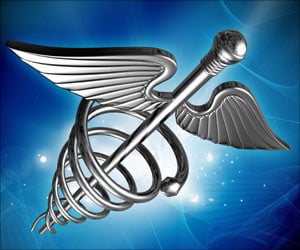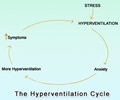
The retrospective study examined 46 division one collegiate athletes, marathon and triathlon runners who were newly diagnosed with PVFMD, a condition brought on by stress, anxiety or increased exertion which causes the vocal cords to constrict and obstruct breathing. An estimated five percent of athletes have PVFMD, which can severely impact performance.
"There isn't a lot in the literature about PVFMD in elite athletes, and our study shows that because of their high level of conditioning they may be more difficult to diagnose and treat than non-athletes." said Brad deSilva, MD, the study's lead investigator and residency program director for the Department of Otolaryngology-Head and Neck Surgery at Ohio State's Wexner Medical Center.
For example, only 30 percent of the study group reported consistently experiencing PVFMD symptoms like coughing during exercise. However, in post-exertion testing using a flexible fiberoptic laryngoscope (FFL), researchers ultimately verified PVFMD diagnosis in all but six of the athletes. Additionally, in comparison to a control cohort of non-athletes with PVFMD, athletes were less likely to present with a history of reflux, laryngeal edema or psychiatric diagnosis.
The study presenters noted that the addition of the exercise trigger during FFL improved the researcher's ability to detect PVFMD, and that clinicians may want to strongly consider FFL examination when dealing with an elite athlete patient with breathing issues, particularly because the respiratory sounds of PVFMD may be confused with asthma.
"PVFMD symptoms can often mimic asthma, and as many as 40 percent of people with asthma also have PVFMD - so it's typical for an athlete to get the asthma diagnosed correctly, but not the vocal cord dysfunction," said Anna Marcinow, MD, co-author of the study and a senior resident in the otolaryngology program at Ohio State's College of Medicine. "Nearly a third of our study athletes had been previously prescribed an inhaler for exercise-induced asthma - but many reported that the inhalers weren't helping. A minimal response to bronchodilators should also point toward a PVFMD diagnosis."
Advertisement
Biofeedback, practice observed therapy and thyroarytenoid muscle botulinum toxin injection were utilized in patients that did not respond to LCT.
Advertisement
The researchers also noted that while PVFMD is first often seen in athletes who have recently intensified activity and training, it can also occur in non-athletes who are adopting a more rigorous exercise program.
Source-Newswise












